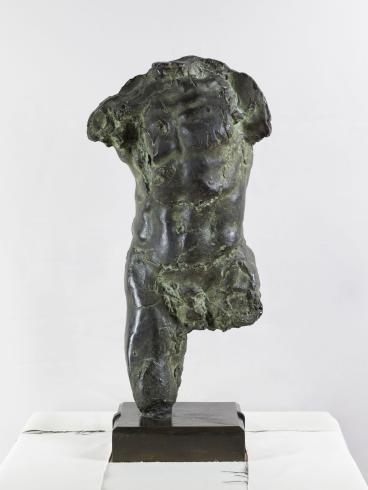In 1887 or thereabouts, when looking round his studio, Rodin was excited to come across an abandoned study for the big plaster Saint John the Baptist that he exhibited at the Salon of 1880 : a man's torso, fissured, cracked and incomplete.
To preserve its almost archaeological beauty, this great lover of antique works had a mould and a very fine cast made of it. These are presented here.
The patina artist clearly sensed Rodin’s unique view of this piece, to the point of giving it the appearance of an antique fragment: the greenish patina plays on the nuances that we see in the bronze statues found during archaeological digs…
In 1900, Rodin gave new life to the Torso : he created a plaster proof which he assembled with a pair of legs - also a study for Saint John the Baptist - thus creating the revolutionary Walking Man. This truncated statue in movement, without a head or arms, was presented during the same year at the Alma Pavilion, an exhibition venue separate from the Universal Exposition, where Rodin displayed the results of his most recent pursuits.
Going beyond its elliptical audacity, the Walking Man reveals a mature Rodin, fascinated by fragments, assemblies and the effect of the passing of time on his creation.
A. S.

City of Paris municipal collection's website
The collections portal can be used to search the collections of Paris’s 14 municipal museums (approximately 336,000 works, including 43,000 belonging to the Petit Palais).
It is also possible to download around 12,000 images of the museum’s works free of charge.
Access the Museums of the City of Paris collections portal
Extern databases
Discover a selection of databases online presenting works from the Petit Palais or documents concerning the history of the museum.

